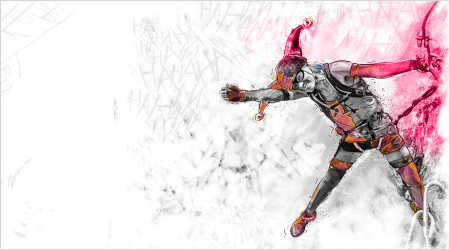TILAK & SINGING ROCK Team in the Land of Whisky, Heather and Hoar Frost Climbing
 Scotland is primarily famous for its whisky and the little Shetland ponies. In the climbing world, however, it earned its reputation thanks to winter climbing which follows the traditional climbing ethics prohibiting use of bolts, and extraordinarily changeable weather.
Scotland is primarily famous for its whisky and the little Shetland ponies. In the climbing world, however, it earned its reputation thanks to winter climbing which follows the traditional climbing ethics prohibiting use of bolts, and extraordinarily changeable weather.„The unfavourable conditions gave rise to a very resistant breed“, the online encyclopaedia says about the ponies. And the same thing applies to the whisky and climbing as well. The unfavourable conditions of the North gave rise to an interesting climbing tradition which is a kind of a winter analogy to Czech summer sandstone rock climbing. As well as the difficulty of Czech sandstone climbing is determined by the distance between the rings, in Scotland it is determined by a strict refusal of bolts and very scarce use of pitons. As the winter conditions cover the rock in hoar frost and glaze ice, the use of friends is limited (they can't stuck in frozen cracks) and it's necessary to return to simpler belaying devices such as hexes or nuts, which you can insert into the frozen crack with an ice axe. The ice is often in the form of glaze, in which ice axes and crampons stick well, but the options of ice screw belay are more limited.
 We spent three days climbing in the Cairngorms area, then one day in a distillery in order to learn about the cultural heritage of the Scottish Highlands (single malt whisky) and two days climbing at Ben Nevis. Cairngorms is a vast national park and most of the climbing sectors aren't larger than 200 meters. The rocks are lower but there's higher concentration of hard routes. We spent two days in the mist (aptly called “white out“ in the guide), climbing shorter routes, which we almost couldn't see because of it. On the third day the weather surprisingly improved, so we went for a longer hike. The most famous wall of Scotland (if not of the whole Great Britain) is the north face of Ben Nevis where we were lucky to have quite unusual weather (= nice) and where we climbed the medium difficulty routes: Minus One Gully (Honza, Martin), Gemini (Roman, David) and a bit harder The Shield Direct (Vašek, Stoupa), in whose initial glazes the conditions are rarely favourable and which is at the same time the first route with this particular grade at Ben Nevis (local grading is VII/7, which is something like a poorly belayed M7).
We spent three days climbing in the Cairngorms area, then one day in a distillery in order to learn about the cultural heritage of the Scottish Highlands (single malt whisky) and two days climbing at Ben Nevis. Cairngorms is a vast national park and most of the climbing sectors aren't larger than 200 meters. The rocks are lower but there's higher concentration of hard routes. We spent two days in the mist (aptly called “white out“ in the guide), climbing shorter routes, which we almost couldn't see because of it. On the third day the weather surprisingly improved, so we went for a longer hike. The most famous wall of Scotland (if not of the whole Great Britain) is the north face of Ben Nevis where we were lucky to have quite unusual weather (= nice) and where we climbed the medium difficulty routes: Minus One Gully (Honza, Martin), Gemini (Roman, David) and a bit harder The Shield Direct (Vašek, Stoupa), in whose initial glazes the conditions are rarely favourable and which is at the same time the first route with this particular grade at Ben Nevis (local grading is VII/7, which is something like a poorly belayed M7).  The climbing itself, oddly enough, depends on the particular conditions of each route – it's not like I supposed: that you can climb anything, the only thing that matters being the climber's endurance to the unfavourable weather. You need the rock to be covered with just right layer of ice and hoar frost - it can't be dry, nor it should have too thick a layer of snow frappé to clean that results in a progress of about one pitch in 2-3 hours, which is not fun anymore. Once we gave up climbing a more difficult route because of the frappé layer, another time because of rock being too dry and with no ice, and the third time we stopped and turned away from the wall because of an avalanche danger. At least we have a reason to come back to Scotland again – apart from the whisky!
The climbing itself, oddly enough, depends on the particular conditions of each route – it's not like I supposed: that you can climb anything, the only thing that matters being the climber's endurance to the unfavourable weather. You need the rock to be covered with just right layer of ice and hoar frost - it can't be dry, nor it should have too thick a layer of snow frappé to clean that results in a progress of about one pitch in 2-3 hours, which is not fun anymore. Once we gave up climbing a more difficult route because of the frappé layer, another time because of rock being too dry and with no ice, and the third time we stopped and turned away from the wall because of an avalanche danger. At least we have a reason to come back to Scotland again – apart from the whisky!For TILAK & SINGING ROCK Team
Stoupa
TILAK & SINGING ROCK Team, Scotland 03/2016
photo: the trip's participants
(Jan Kolář, Martin Horák, Roman Kamler, David Vomáčka, Vašek Šatava, Dušan "Stoupa" Janák)
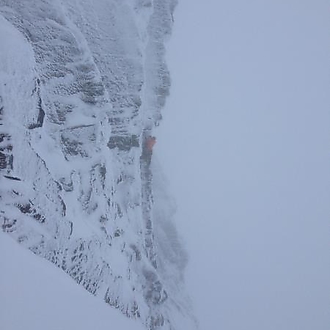
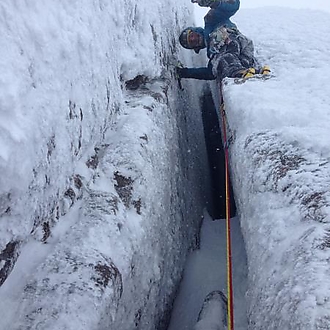
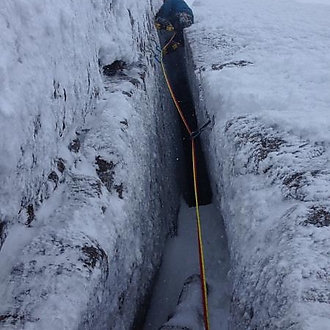
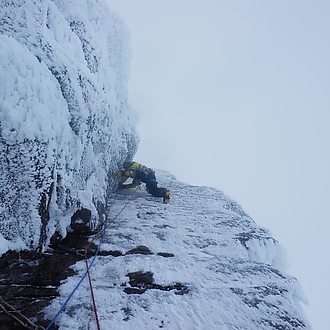
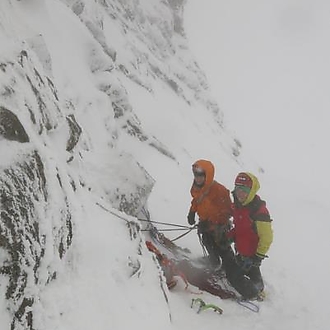
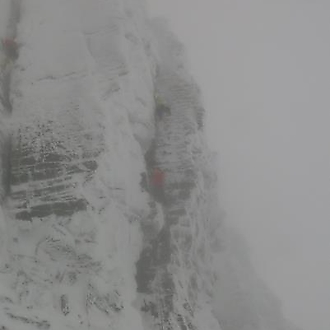
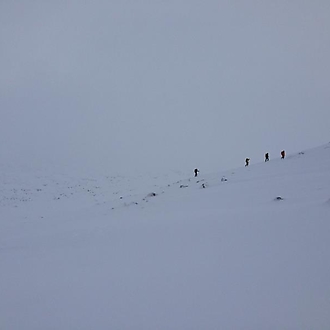
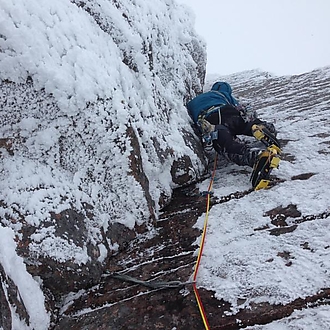 Más
Más